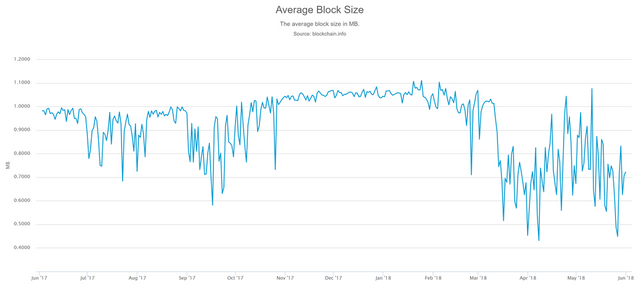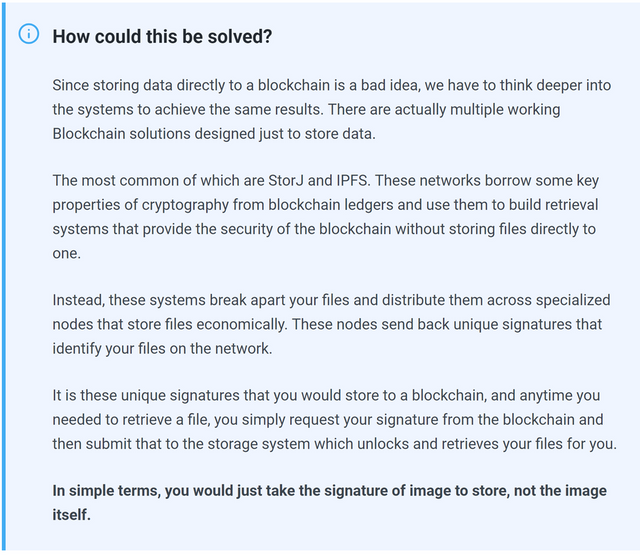
This is part two of a multiple part series beginning with where we explore blockchain and how it can best be leveraged for business today.
Blockchain technology has come a long way since it's first inception as a Bitcoin payments ledger. So much so, that most of the information online about the use cases for blockchain are polarized between grand visionary futures of an interconnected internet of value and warnings of financial doom resembling the financial bubbles of the past.
As usual with popularized technology, the answer lies somewhere in the middle. Due to this polarizing atmosphere, what we will be doing is laying out the strengths and pitfalls of blockchain technology based on irrefutable facts, and then determine the feasibility and most appropriate uses for a blockchain based on that.

Data storage and transfers
As we learned in the Intro to Blockchain, blockchain ledgers are immutable, meaning the data cannot be modified, deleted, or moved elsewhere. The problem this adds is with the peer-to-peer nature of blockchain systems. If each and every participant maintains a full working copy of the blockchain, then every time any data is added to it, it must be added to the hard drives of all participants in the network.
Hypothetical Example:
You are the owner of a modest media and design firm that focuses on technology based clients. You have heard a lot about blockchain from these clients, and have become interested yourself at the possibilities.
After reading about the benefits and how they work, you decide you could use one within your own business to streamline the access and copyright protection of images created in house, as well as give you an interesting topic to bring up with clients to show you are truly tech savvy. You envision:
- A secure master file for all company IP
- Irrefutable transaction signatures to secure copyrighted content
- Elimination of cloud storage providers by leveraging your employees empty hard drive space to store your images on * the shared blockchain.
At first glance, you see blockchain as a good way to create a secure master file of all company images and avoid the hosting costs of cloud storage providers. Now blockchain enables everyone to share their files and encrypt them in real time.
In the beginning, you think it's amazing. The IT department setup a notification system that let's employees know when images were added from specific departments, this helps employees save time that they would otherwise use checking drives or asking coworkers. They also setup an application that automatically forwards images to be submitted for copyright protection.
So each time one of your designers, photographers, or editors creates an image it get's automatically added to the blockchain. And when an employee needs an image, they simply use the appropriate address to retrieve them.
Life is good. Everyone is enjoying the buzz of trying something new.
As time progresses however, everyone's systems start moving extremely slow, and eventually the network becomes unusable. There is simply too much bandwidth moving from employee to employee for anybody to use the internet. Your tech clients however are enjoying the blockchain use, and love being able to retrieve their images anytime from the app using their unique signatures without needing to ask.
So you buckle down and pay for more bandwidth. Fast forward and it's been a year. Your internet costs are astronomically higher than the costs of cloud storage, and everyone is out of hard drive space.
Employee offices are covered in sticky notes containing transaction hashes and addresses. Your company chat is filled with messages about when the next block will be confirmed. The slow internet bandwidth has ruined any nostalgia still held around dial up connections.

It's a distributed nightmare of redundant and useless data. You are forced to move all images back to a cloud storage provider and have lost many employees and clients due to the frustratingly slow experience.
Your idea failed, your app failed, and your company is worse off than it was before.
So what went wrong exactly?
Let's say the average image was 2 MB in file size, which is double the current maximum size of an entire Bitcoin block, which houses upwards of 1250 transactions as of this writing.

Now as we covered previously, Bitcoin is not blockchain, so the amount of data you can put in each block to be written to a blockchain is entirely up to you. So lets say your blockchain was designed to have block sizes of 2 GB. (Another horrible idea)
As you can probably surmise, if there were 1000 participants all sharing even a single 2 MB image each day for an entire year, they would all have a blockchain taking up 730 GB of data storage on their machines for a combined total of 730 Terabytes for the company as a whole.
The block height would be 365,000 for those also following along with the chain of things. Not only is the storage a massive issue, imagine the bottleneck of trying to sync that much data in real time 24/7.
So as you can see, blockchains are not good for storing or transferring rich data, but that's not to say it's not possible to do what this hypothetical company wanted to do.

Now this is just one small example of how data usage can cause problems with blockchain, there are many more examples not involving storage solutions, which I'll let you research on your own.
In the next part of the series, I will be going over yet another main issue with blockchain technology, which is the drastic and irreversible consequences human error can play in blockchain systems.
Congratulations @accrubit! You have received a personal award!
Click on the badge to view your Board of Honor.
Do not miss the last post from @steemitboard:
Downvoting a post can decrease pending rewards and make it less visible. Common reasons:
Submit
Congratulations @accrubit! You received a personal award!
You can view your badges on your Steem Board and compare to others on the Steem Ranking
Vote for @Steemitboard as a witness to get one more award and increased upvotes!
Downvoting a post can decrease pending rewards and make it less visible. Common reasons:
Submit